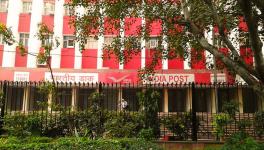The Migrant and the Moral Economy of the Elite
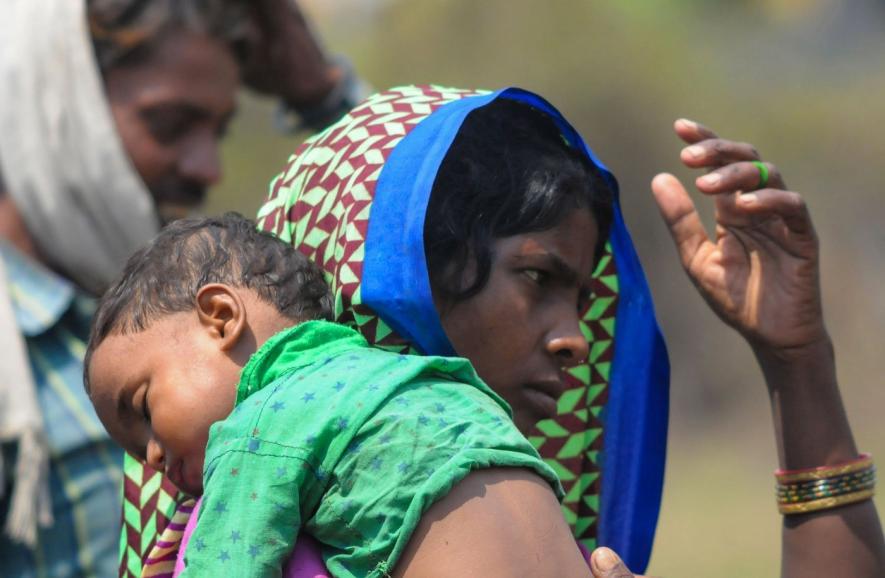
Image Credit: Sudarshan Sakharkar
“The movement of individuals shall remain ‘strictly prohibited’ between 7 pm and 7 am except for essential activities.”
– Ministry of Home Affairs circular (as reported by India Today, May 17)
The circular offered ‘relief for migrant workers by allowing inter-state movement of passenger vehicles and buses’ (IF two neighbouring states could agree on it). But said nothing about the millions voting with their feet on the highways.
Those curfew hours condemned them to walking between 7 a.m. and 7 p.m. in the hottest phase of summer, with temperatures touching 47 degrees Celsius.
A month earlier, Jamlo Madkam, a 12-year-old Adivasi girl, working in the chilli fields of Telangana, set out on foot to reach her home in Chhattisgarh after the lockdown halted work and income. This child walked 140 kilometres in three days, then fell dead of exhaustion, dehydration and muscle fatigue, 60 km from her home. How many more Jamlos will such curfew orders create?
First, the prime minister’s March 24 announcement stoked panic, giving a nation of 1.3 billion human beings four hours to shut down. Migrant workers everywhere began their long march home. Next, those the police could not beat back into their urban ghettos, we intercepted at state borders. We sprayed people with disinfectant. Many went into ‘relief camps’, a relief for whom it is hard to say.
The Mumbai-Nashik highway seemed busier under lockdown than in normal times. People moved any way they could. Bimlesh Jaiswal, who lost one leg in an accident years ago, travelled 1,200 km from Panvel, Maharashtra, to Rewa, Madhya Pradesh, on a gearless scooter, with his wife and three-year-old daughter. “Who shuts down a country with a four-hour notice?” he asks. Come on Bimlesh, you know the answer to that one.
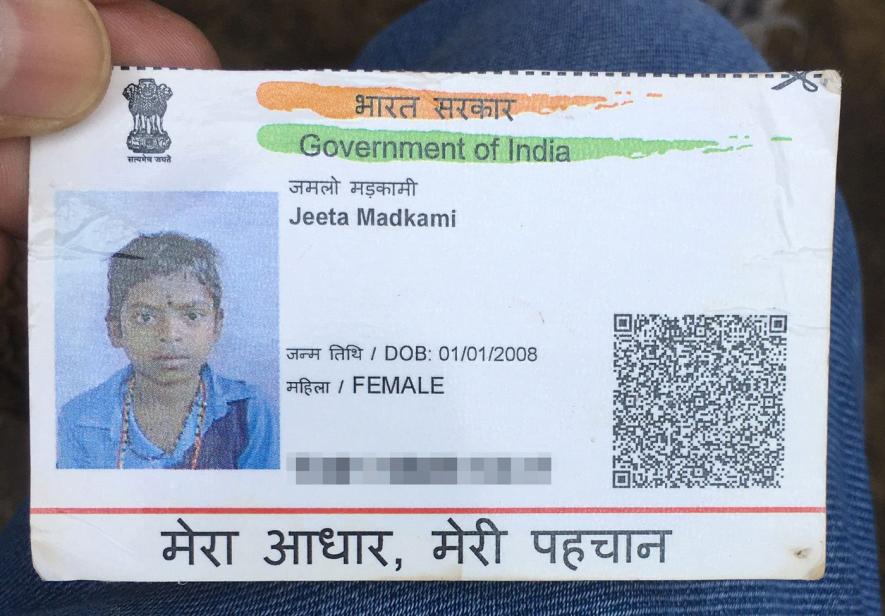
How many more Jamlos will such curfew orders create? Photo: Kamlesh Painkra
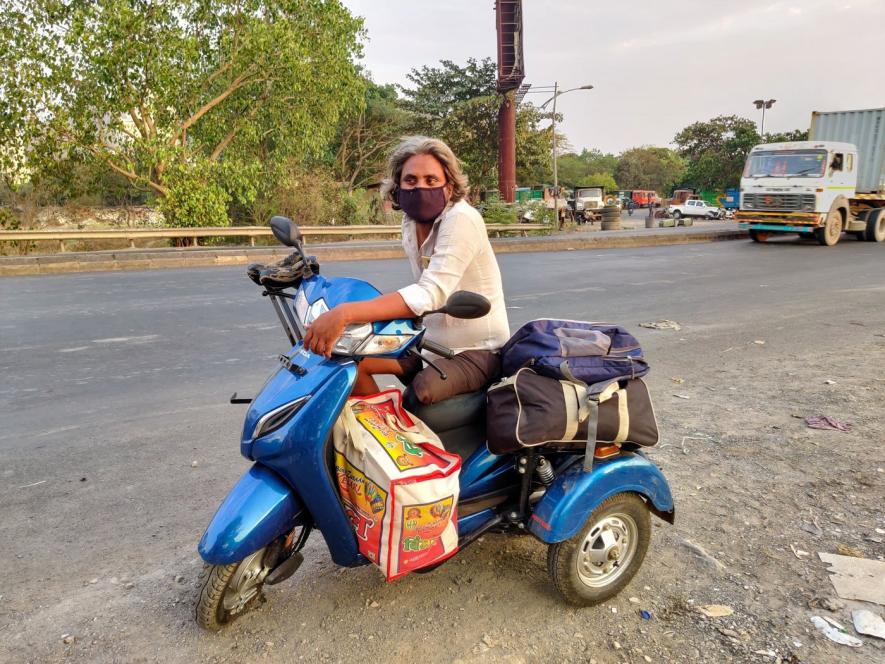
Bimlesh Jaiswal rode a scooter (he has only one leg) across 1,200 kms. Photo: Parth M.N.
Meanwhile, we said: “Hey, we’ll organise trains everywhere and send you guys home.” We did, and demanded full fare from hungry, desperate people. Then we cancelled some of those trains, as builders and other lobbies needed to stop their captive labour from fleeing. Those and other controversies dangerously delayed the launch of large-scale train services. On May 28, the government told the Supreme Court of India that 9.1 million labourers have been shifted to their native places since the Shramik Special trains started on May 1. And the fares, the Solicitor General told the court, in some cases the originating state would pay, in some cases the receiving state. (No contribution here from the Centre.)
It gives you a glimpse, but only a glimpse, of the scale of what is going on. We do not know how many millions more are trying register for travel on those trains. We do not know how many millions are on the highways. We do know they desperately want to go home. And we know there are powerful lobbies that don’t want that and, in fact, feel the need to restrain and discipline that labour. Several states extended working hours to 12, including three BJP-ruled ones that did not mandate overtime for the additional hours. A slew of labour laws were suspended, for three years, by some states.
As on April 12, the government told us 1.4 million people were in relief camps across India. Double the number in such camps on March 31. Those thronging ‘food camps’, community kitchens, NGO efforts, the like, numbered 13 million on April 12. More than five times the March 31 figure. And all these numbers measured but a fragment of the full scale of the disaster. As of today, it still appears that ordinary people, individuals, communities, neighbourhoods, activist groups, non-profits, charitable organisations and the migrants themselves, could be spending more money on fighting the crisis than the central government is. Their concern is surely more genuine.
Between March 19 and May 12, Prime Minister Narendra Modi addressed the nation five times on television. He called on us to bang pots and pans, light diyas, shower flower petals to honour the ’frontline warriors’ against Covid-19. Only in the fifth speech did he mention labourers at all. ‘Migrant labourers’, just once. Go figure.
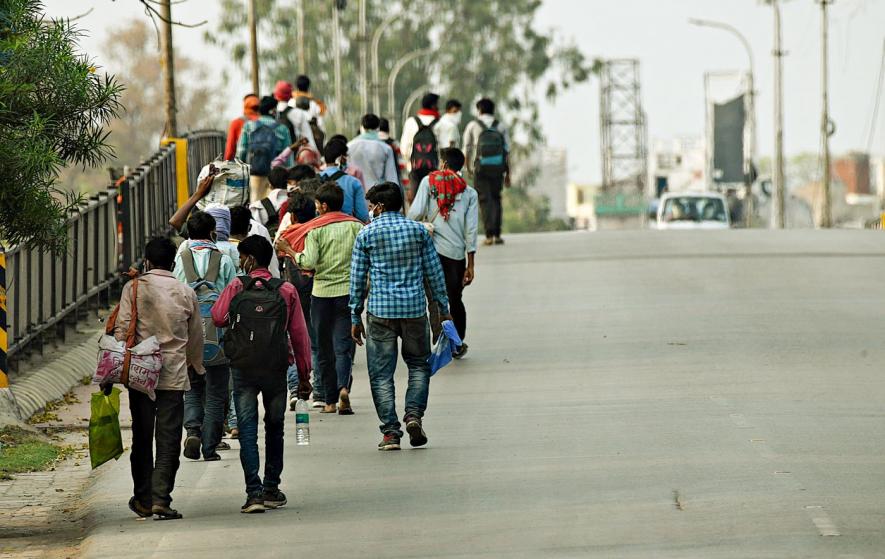
Corona refugees returning from Raipur in Chhattisgarh to different villages in Garhwa district of Jharkhand state. Photo: Satyaprakash Pandey
Will the migrants come back?
Many will return over time for lack of options. In nearly three decades of our chosen path of development, we snuffed out millions of livelihoods, sparking a still ongoing agrarian crisis that has seen over 315,000 farmers take their own lives.
By all means discuss ‘reverse migrations’. But do ask why they left their villages in the first place.
In 1993, there was one bus service a week from Mahbubnagar, in what is now Telangana state, to Mumbai. In May 2003, when I boarded that overcrowded bus, there were 34 weekly on that route, rising to 45 by the month-end. My fellow travellers were driven by the collapse of the agrarian economy. Among them, a 15-acre landowner, who told me his farm was finished and he needed to work in Mumbai. Sitting beside him was his former bonded labourer, making the same journey.
It struck me then: we are all in the same bus.
In 1994, there were scarcely any Kerala state transport corporation buses running between Mananthavady in Wayanad district and Kutta town in Karnataka. Till the agrarian crisis struck, cash crop-rich Wayanad had been a district of in-migration. By 2004, the KSRTC was running 24 trips daily to Kutta. Work in Wayanad had withered with its agriculture.
This was happening across the country. But we romanced our growth numbers, reminding me of Edward Abbey’s famous line: ‘Growth for the sake of growth is the ideology of the cancer cell’. We were in celebratory mode, though, and those pointing to rising rural distress were ridiculed.
Since most editors and anchors still don’t get it (though their young reporters often seem to): an agrarian crisis is not only about farming. When millions of livelihoods of non-cultivators in allied occupations – weavers, potters, carpenters, inland fishermen, scores of others, tied to the farm economy – also collapsed, all of agrarian society entered crisis.
Today, people are trying to return to livelihoods we extinguished in the past 30 years.
The media showed little interest when Census 2011 told us that the preceding 10 years had seen extraordinary levels of migration. We learned that for the first time since 1921, urban India had added more people to its numbers than rural India did. We also learned there were 15 million fewer farmers (‘main’ cultivators) in the country than there were in 1991. On average: 2,000 farmers had lost main cultivator status every day since 1991.
Simply: massive distress migrations were on and rising. Many farmer drop-outs didn’t go to the big cities, they fell into the agrarian underclass. The Census showed a huge increase in the numbers of agricultural labourers. Now all of them are being joined by millions who did migrate. What will be the outcome of this new pressure on agriculture? You know the answer.
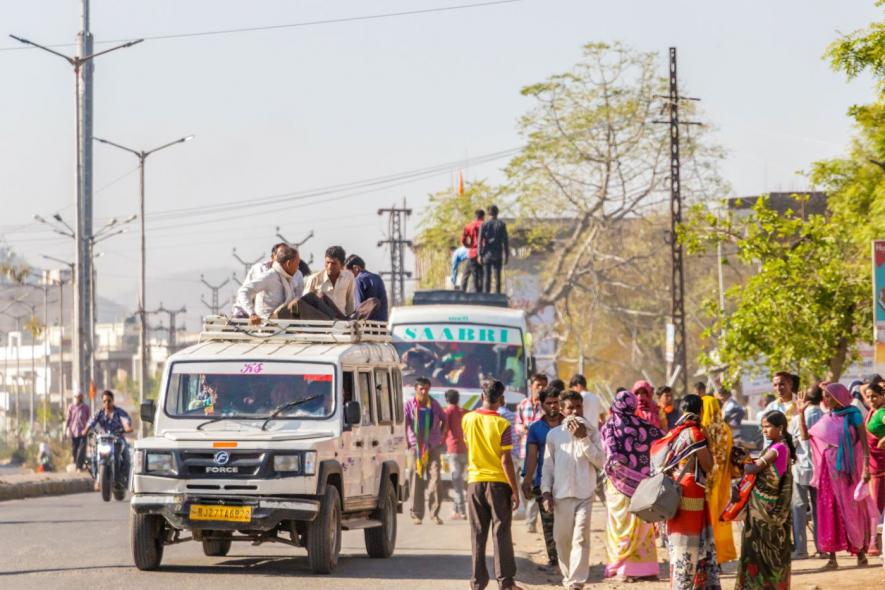
Many labourers from Udaipur district, who migrate to different parts of the country, are stranded because of the lockdown (file photo) | Photo: Manish Shukla
Who are they anyway?
Everyone isn’t leaving a small village for the big city. Sure, rural to urban migrants are many. But there is also a massive flow of rural to rural migrants. This March-April, many who move to other villages, districts and states for work in the rabi harvest couldn’t go. They are in dire straits.
Then there are urban to urban migrations in serious numbers. And a relatively minor number of urban to rural migrants.
We need to consider all of them, especially ‘footloose migrants’. The Census cannot capture this process, the desperate search for work that drives poorer people in many directions without any clear, final destination. Maybe they leave Kalahandi to pull rickshaws for a few days in Raipur. Maybe they get 40 days of work on a construction site in Mumbai. Maybe they land some days of work at the harvest in a nearby district. Maybe.
Census 2011 indicates there were 54 million migrants who cross state borders. But that’s got to be a huge underestimate. The Census understands migration as a one-stop process. The migrant is someone who left point A for point B and was at least six months in the latter when enumerated. The person may have been on the move for years, before reaching, say, Mumbai. The drama of those journeys is never captured. Neither the Census nor the National Sample Survey is geared to recording short-term or step-by-step movements.
If the media seem clueless in covering migrants, who they only discovered on March 26, it’s because they are. They have no beats on this sector and cannot fathom the difference between long-term, seasonal, short-term or circular, or footloose migrants. Why cover beats from which there is no money to be made?
*****
More than one well-meaning person has told me: this is terrible, the migrant worker situation. We must help them. These are hard-working people in total misery. They are not like those factory workers and their unions, always making trouble. These people deserve our sympathy.
Sure, it is correct, if sometimes convenient, for us to show compassion. But the migrant labourers do not need our sympathy, concern or compassion. They need justice. They need their rights to be real, respected and enforced. If a few of those awful factory workers have any rights, it’s because they are organised and have some collective strength and bargaining power, thanks to those noisy unions. If your sympathy and compassion for ‘migrant labourers’ goes beyond the cosmetic and the conditional, support the struggles of all workers in India for justice and their rights.
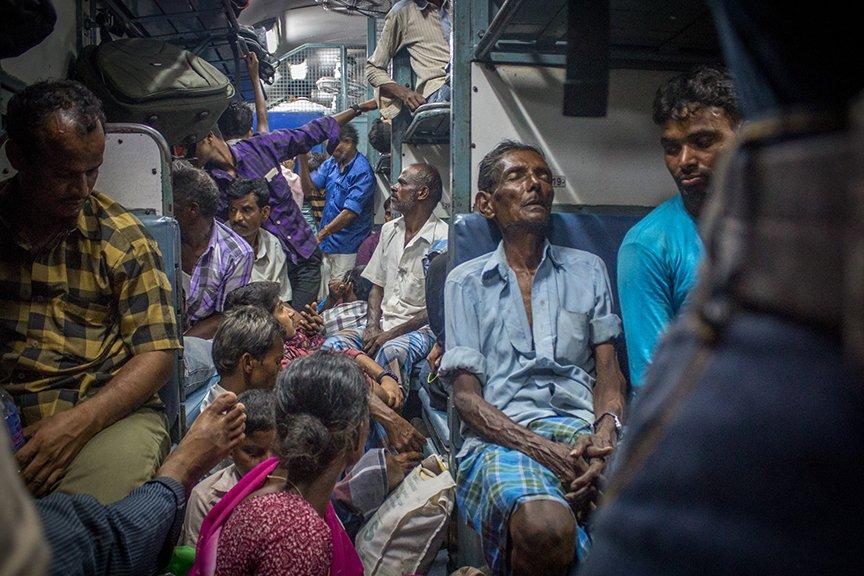
Census 2011 indicates there were 54 million migrants who cross state borders. But thatâs got to be a huge underestimate. Photo: Rahul M.
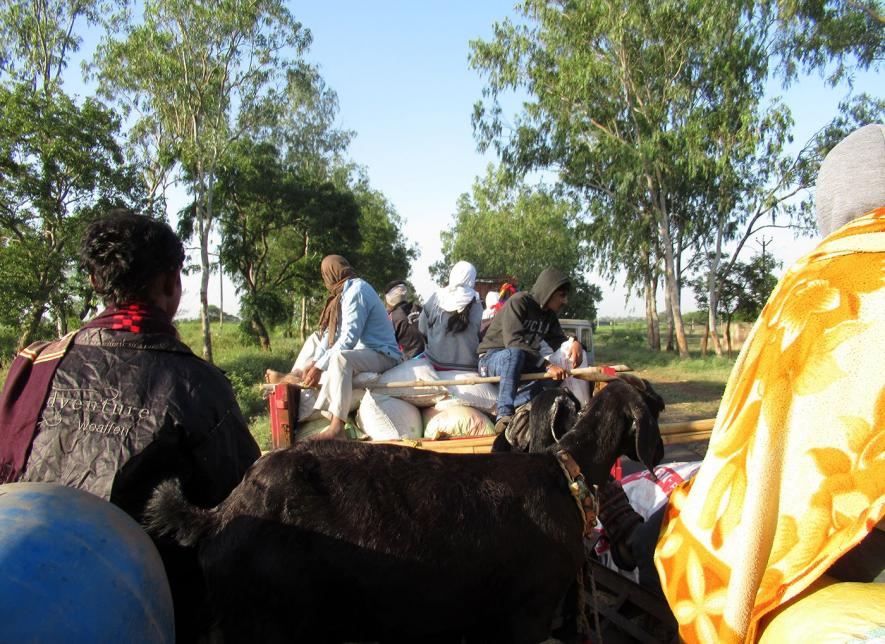
Photo: Parth M.N
That distinction between migrants and other workers is quite peculiar. The operational word in the term ‘migrant labourer’ is ‘labourer’. If the CEO of Infosys quits his Bengaluru-headquartered company and moves to Delhi for better prospects, he would be a migrant, but not a labourer. There are differences of caste, class, social capital and networks that make him very different from the migrant labourers on whom we now shower our pity. Those other awful workers we despise, they talk back to us, you see, and shamelessly demand their rights, are often migrants of earlier generations.
Mill workers in Mumbai were, in the early days, mostly migrants from the Konkan and other regions of Maharashtra. Later, from other parts of the country. As Dr. Ravi Duggal points out in an extraordinarily perceptive article in the Economic and Political Weekly, those workers too once fled Mumbai when the bubonic plague of 1896-97 struck. Over 10,000 people died in Mumbai in the first six months. By 1914, the plague had claimed eight million lives all over India.
“Mill workers constituted 80,000 of the total 850,000 population of the city,” writes Duggal. “Forced to face harassment under plague control measures, which involved sanitisation, quarantine and separation of sick family members in poor conditions, and even destruction of their dwellings, they resorted to striking a number of times in early 1897. Within three to four months of the start of the plague, 400,000 people, including many mill workers, fled from Bombay to their villages, pushing the city into a severe economic crisis.”
What persuaded many to later return? “Many mill owners adopted the strategy suggested by Nowrosjee Wadia of building a bond between the employer and the employed through provision of housing, and better working and living conditions (Sarkar 2014). This brought back workers to Bombay even though the plague had become endemic and only disappeared during World War I.”
The British government too intervened, with an act of parliament creating the Bombay Improvement Trust. The municipal corporation and the government handed over all vacant lands to this trust which then sought, by its own lights, to improve sanitary and living conditions in the city. Alas, its own lights were not very bright: it created some dwellings and destroyed more than it built. But at least there was a thought of improvement. However, then, as now, that thought was about improvement of ‘the city’ and its image. Not of the actual lives and conditions of the poor and marginalised whose labour it lived off.
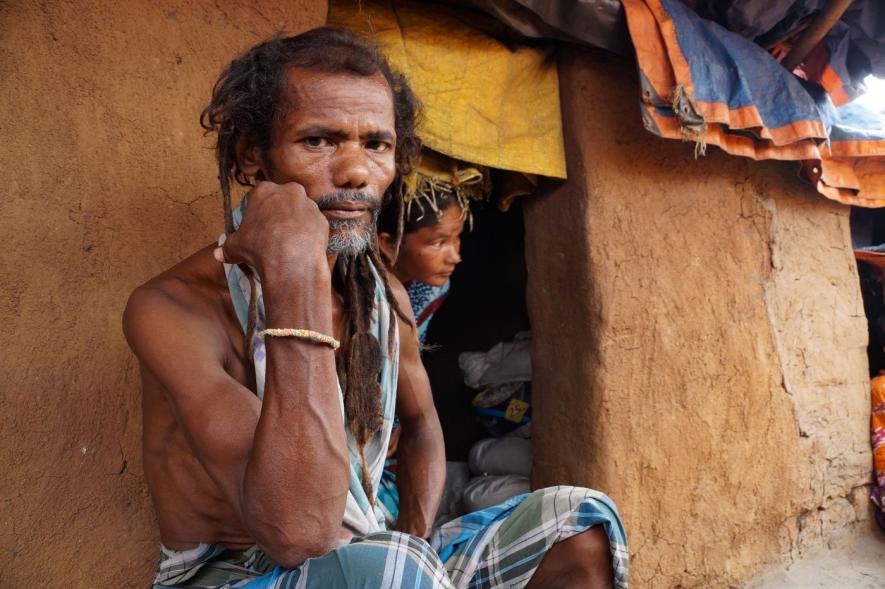
Migrant workers from Odisha stranded at Telangana's brick kilns during the lockdown. Photo: Varsha Bhargavi
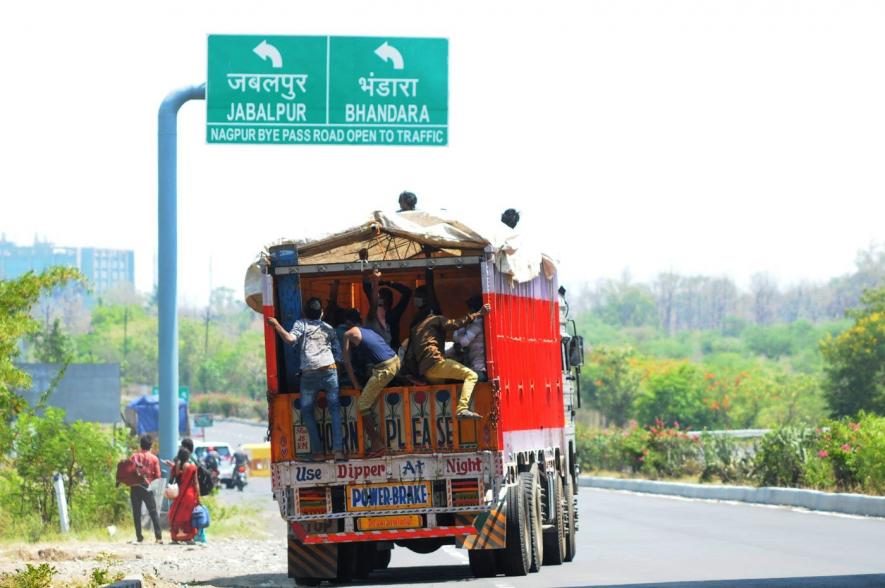
The long road home from Nagpur. Photo: Sudarshan Sakharkar
The compassion for the poor ebbed as the plague and its memories receded. Sounds so much like today, and tomorrow. We discovered the migrants’ miserable conditions this March when we suddenly lost a lot of taken-for-granted services. Compassion has this annoying habit of evaporating when comfort returns.
In 1994, the plague killed 54 people in Surat. Diarrhoea was claiming 1.5 million Indian infants each year, and tuberculosis over 450,000 lives annually in that era. But the plague in Surat got far more attention in the media than two treatable and curable problems which claimed over 30,000 times as many victims the same year.
As that plague quickly vanished, we returned to neglecting the diseases that primarily kill the poor. And the living conditions that make them far more vulnerable than the rest of us to disease.
In our time, even before Covid-19, our ‘inclusive’ development enshrined the vision of ‘smart cities’ which would serve 3 to 5 per cent of their existing populations, abandoning the rest to squalor and ill-health.
Migrants from the villages might get better wages in the city, but their living and health conditions, particularly of women and children, can be abysmal.
Can we do something about all this? Plenty. But first we would have to jettison the notion of going back to business as usual. We need to trash the superstitions and shibboleths of 30 years of market theology. And build the kind of state the Constitution of India mandates, where there is, for all citizens, “Justice, social, economic and political”.
This article was first published in India Today on May 30, 2020. Published here with author's permission.
P. Sainath is a leading Indian journalist and founder of People's Archive of Rural India (PARI).
Get the latest reports & analysis with people's perspective on Protests, movements & deep analytical videos, discussions of the current affairs in your Telegram app. Subscribe to NewsClick's Telegram channel & get Real-Time updates on stories, as they get published on our website.









